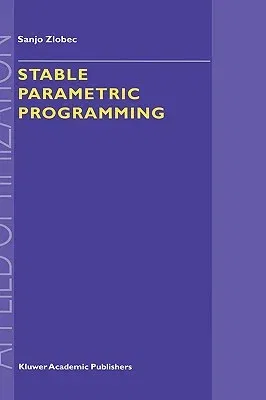Optimality and stability are two important notions in applied
mathematics. This book is a study of these notions and their
relationship in linear and convex parametric programming models. It
begins with a survey of basic optimality conditions in nonlinear
programming. Then new results in convex programming, using LFS
functions, for single-objective, multi-objective, differentiable and
non-smooth programs are introduced. Parametric programming models are
studied using basic tools of point-to-set topology. Stability of the
models is introduced, essentially, as continuity of the feasible set of
decision variables under continuous perturbations of the parameters.
Perturbations that preserve this continuity are regions of stability. It
is shown how these regions can be identified. The main results on
stability are characterizations of locally and globally optimal
parameters for stable and also for unstable perturbations. The results
are straightened for linear models and bi-level programs. Some of the
results are extended to abstract spaces after considering parameters as
`controls'. Illustrations from diverse fields, such as data envelopment
analysis, management, von Stackelberg games of market economy, and
navigation problems are given and several case studies are solved by
finding optimal parameters. The book has been written in an analytic
spirit. Many results appear here for the first time in book form.
Audience: The book is written at the level of a first-year graduate
course in optimization for students with varied backgrounds interested
in modeling of real-life problems. It is expected that the reader has
been exposed to a prior elementary course in optimization, such as
linear or non-linear programming. The last section of the book requires
some knowledge of functional analysis

